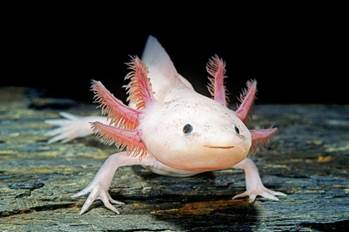Free Courses Sale ends Soon, Get It Now


Free Courses Sale ends Soon, Get It Now



Disclaimer: Copyright infringement not intended.
Context
Details
|
AXOLOTL The axolotl is a paedomorphic salamander. Paedomorphosis is an alternative process to metamorphosis in which adults retain larval traits at the adult stage. It is frequent in newts and salamanders, where larvae reach sexual maturity without losing their gills. Axolotls are thus unusual among amphibians in that they reach adulthood without undergoing metamorphosis. Instead of taking to the land, adults remain aquatic and gilled. The species was originally found in several lakes underlying Mexico City, such as Lake Xochimilco and Lake Chalco. They are listed as critically endangered in the wild, with a decreasing population of around 50 to 1,000 adult individuals, by the International Union for Conservation of Nature and Natural Resources (IUCN) and are listed under Appendix II of the Convention on International Trade in Endangered Species (CITES). Axolotls are used extensively in scientific research due to their ability to regenerate limbs, gills and parts of their eyes and brains. Axolotls were also sold as food in Mexican markets and were a staple in the Aztec diet. |
Cell Functions
Single-cell RNA sequencing
|
SINGLE CELL SEQUENCING Single-cell sequencing technologies refer to the sequencing of a single-cell genome or transcriptome, so as to obtain genomic, transcriptome or other multi-omics information to reveal cell population differences and cellular evolutionary relationships. Single-cell RNA sequencing (scRNA-seq), for example, can reveal complex and rare cell populations, uncover regulatory relationships between genes, and track the trajectories of distinct cell lineages in development. Traditional sequencing methods can only get the average of many cells, unable to analyze a small number of cells and lose cellular heterogeneity information. |
Process of Cell regeneration: The mechanism explained
Brain regeneration in Axolotls happens in three main phases.
© 2024 iasgyan. All right reserved